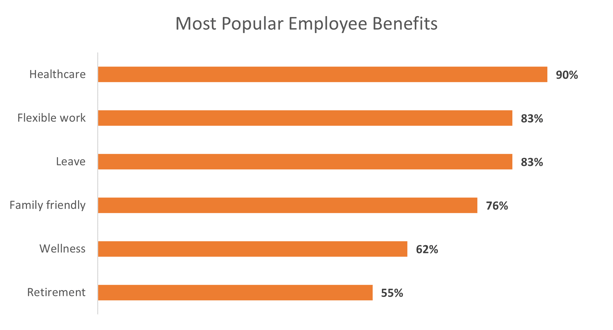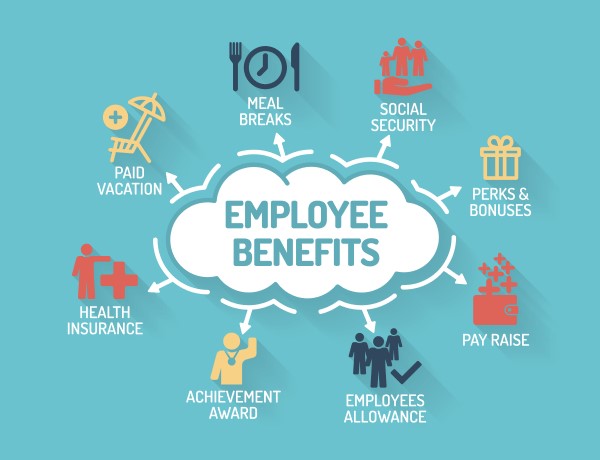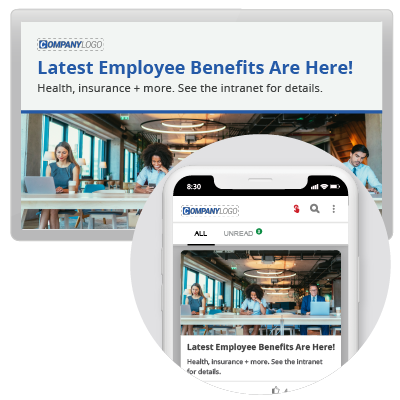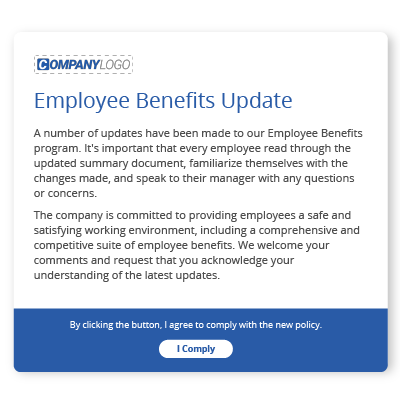
How does a full year of paid leave for new parents sound? Or four-week sabbaticals to “pursue creative talents”? How about fertility assistance and egg freezing for would-be parents? Or even paying for gender reassignment surgery?
These are all real employee benefits offered by companies today.* But while these benefits may be a little more unusual, most organizations still offer an appealing range of benefits to their staff.
It’s an area that matters to employees. 80% would choose additional benefits over a pay raise, according to Glassdoor’s Employment Confidence Survey.
Getting the most value out of your employee benefits means ensuring employees understand and appreciate what’s on offer. Communication is key. That’s why 53% of employers globally (and as much as 65% in North America) are prioritizing this.
The tactics and examples below will show you how to communicate employee benefits to your employees – and maximize the value of your benefit programs.
*At Netflix, Epic Systems, Spotify, and Accenture respectively

Source: Wills Towers Watson 2021 Benefit Trends Survey
1. What Are Employee Benefits?
Employee benefits are a form of compensation given to employees over and above their standard remuneration. Some are legally required and some are discretionary.
Common benefits include health, wellbeing, and medical insurance. Employees are granted access to products, services, or special extras by their employers.
For employers, the nature of the benefits offered helps gain a competitive edge. For employees, they are an important component of a positive employee experience. This in turn drives lower staff turnover, increased productivity, and higher morale.
But which types of employee benefits are most popular? A recent survey reveals that healthcare is still top, though flexible working and leave have grown in importance, while retirement benefits have declined.

Source: SHRM 2020 Benefits Survey
2. Managing An Employee Benefits Program
Creating a suite of benefits for your employees is just the beginning. Effective employee benefit programs need to be managed, reviewed, and updated every year. These considerations should be part of every HR Manager’s plan to ensure their programs remain compelling and current.
What is being offered in the wider market?
Review the typical benefits packages offered in your industry or local market. This shows whether you’re ahead of the pack, in line with everyone else, or falling behind. Reading competitors’ current job listings, or just browsing their website, can often provide all the intel you need.
What benefits set employers apart – and what are now table stakes?
Unique benefits enhance your appeal to prospective employees. But things change. The amazing benefit you came up with two years ago may now not be quite as unique. Review your offering against the market to assess whether what used to set you apart is now a standard employee expectation. If so, it’s time to reconsider what you need to regain a competitive edge.

What is the influence of social and environmental changes?
The COVID-19 pandemic had a profound impact on every aspect of working life. As a result, some benefits became more highly sought-after, while others were ho-hum. Many benefits promoting physical wellness in the workplace decreased in 2020, while benefits that were offered online increased.
The Inc. annual Best Workplaces survey shows the greater appeal of childcare and family benefits, flexible working hours, home office expenses, and mental health support.
Annually reviewing the benefits you offer and updating where necessary is essential. Nearly three-quarters of employers are focusing on differentiating their benefit offerings from those of other organizations. In a competitive job market, this can make the difference in attracting and retaining the best staff.
When you’re confident you have a compelling suite of benefits, it’s then time to communicate it and promote it in your organization.
3. Employee Benefits Communication
Benefits that staff don’t use or are unaware of are ultimately worthless. That’s why an effective campaign of employee benefits communication is important. 42% of employers globally are planning promotional campaigns for their employee benefits programs.
HR teams must improve employees’ experience with benefits – increasing awareness and engagement. But using traditional communication tools makes achieving this a challenge. Lengthy emails are likely to be missed or ignored. Staff are too busy to refer to your intranet.
Use these examples of digital communication channels to promote employee benefits in your workplace.
Employee apps
Mobile communications are a must to reach staff on their ubiquitous smartphones. Promoting benefits messaging through the newsfeed of employee communication apps is a great way to get your people interested.
With the ability to brand, personalize and add social interactions, apps are especially effective for Gen Z and other younger workers. It’s also largely an untapped opportunity – only 31% of companies are currently using this type of enhanced communication.
Digital screens
Every screen in your organization is a promotional tool just waiting to be used. From large digital signage in kitchens, shared spaces, and lobbies, to desktop screens on every PC, your benefits messaging can reach every staff member.
Simple to create corporate screensavers are effective because they’re highly visual. Messages reach staff before they realize it – meaning your benefits messaging cuts through faster. Animation and other effects can be incorporated for even more ‘wow factor’.
Online surveys
As discussed earlier, benefits are most successful when they offer what employees want. Find out which benefits appeal most to different employee groups through a pop-up online survey. Repeat unread messages until you achieve the desired response rates.
Use the insights gained to more accurately source new benefits and promote existing ones. By doing this, staff feels involved in the process and are more likely to use what’s on offer.

Personalization and targeting
Relevance is key to effective communication. Relevant messages receive higher open rates and readership. You can increase the relevance of your benefits messages through personalization and targeting. 42% of employers are looking at personalization to improve their benefits communication.
Segment your workforce by life stage, location, age, or any other meaningful criteria. Then communicate benefits around career development, family healthcare, and retirement benefits appropriately.
Compliance
Regular reviews of your benefits program will inspire changes to what’s offered. Every time you issue an update to staff, you’ll need their acknowledgment that they understand and accept the changes.
Tracking this is important for compliance audits, so use Compliance Alerts for employees to opt-in to accept benefit changes and conditions. A mandatory ‘I comply’ button forces staff to respond, and recurrence can be used to repeat messages until every staff member has responded.

Education sessions
Launch benefits updates with a bang by presenting them in dedicated sessions. Maximize attendance and participation by promoting sessions via an online RSVP alert.
You can make these sessions truly interactive by asking for questions in advance, which are then answered in the session. As well as effective promotional channels, these sessions foster the clarity and transparency that employees want.
Employee benefits packages have become increasingly important to how staff view their employer. Benefits are much more than the answer to WIIFM (What's in it for me?). They’re a key influence on employee productivity and maintaining competitive advantage.
Following the ideas above on how to communicate employee benefits to staff will ensure your organization reaps the best return from your benefits program.



